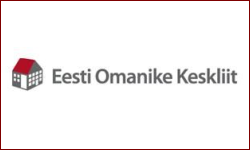 The week was once again packed with economic activity. Reviewed data on the GDP for Q3 were published, unfortunately there were no major changes – the economic growth estimation was increased from 0.5% to 0.7% year on year. Worse-than-expected economic performance has made several forecasters adjust their estimates downwards.
The week was once again packed with economic activity. Reviewed data on the GDP for Q3 were published, unfortunately there were no major changes – the economic growth estimation was increased from 0.5% to 0.7% year on year. Worse-than-expected economic performance has made several forecasters adjust their estimates downwards.
Economic growth slower than expected
Looking back at the soon-to-end year, the economic environment has been rather stable in Estonia. Low external demand and cyclic problems in some larger industries have weakened Estonia’s export. At the same time, employment has increased strongly and average wages have grown. Better incomes and more choices on the job market have driven domestic consumption. Furthermore, all this has been supported by stagnate prices, reduction of the income tax rate and hike in benefits. However, the growth of GDP has been rather volatile. The 1% growth in the first quarter increased to 2% in the second quarter, only to plummet back to 0.7% in the third.
The business results (except for the financial sector) for the third quarter, published at the end of last week, raised hopes that the initial estimate of the GDP growth would be adjusted well upwards. Although sales revenues dropped during summer months, companies were able to cut costs, thus growing their profits by 5%. This combined with a strong increase in labour costs, caused the added value generated in the enterprise sector in the third quarter to increase by a total of 6.5% in nominal prices. However, in the GDP statistics, the added value increased by merely 1.3% while the indicator comparable to profits, i.e., the operating surplus of the total economy, even decreased. In the national accounts, other sectors besides companies are covered. Moreover, the performance of financial companies is not reflected in the business statistics. The large discrepancy, however, is mainly caused by the method of measuring economy – simply put, the business statistics is based on sales, GDP statistics on production. As companies were able to increase sales by using their stocks while their production decreased, the official profit indicators increased but not the value created in the economy.
As far as sectors are concerned, those that halted growth in Estonia were construction, transport and storage as well as the processing industry. In construction, the added value generated in the third quarter decreased in real terms by 9% year on year. Although the strong wage increase has enlivened the real estate market, the big picture in the construction sector depends on state orders. Transition from one period of EU structural funds to another has steeply curbed public investments, challenging the sector. Decline in the transport sector has been a prolonged trend, further inflamed by the Russian economic crisis. Investments in the Ust-Luuga Harbour and political differences have had an adverse impact on the sector over a much longer period. As the processing industry yields a majority of the added value generated in the Estonian economy, the shrinkage of the sector has affected economy as a whole. Industry has also been impacted by both the Finnish and Russian crises plus there have been some significant individual factors. For exporters, the market poses challenges everywhere and therefore competition is fierce. Success has been achieved in sectors where Estonia has a slight competitive edge, e.g., in timber industry.
Decline in investments continues
Today the biggest concern is the lack of investment activity in our economy. In the third quarter, the decline in investments was slower, amounting to a decrease of 3.6%. This was the fifth consecutive quarter where investments in business have decreased while in the previous periods the drop has been as much as 10 per cent. Today’s investments have a direct impact on future production, and so postponed investments reduce the economic growth in subsequent periods. The cause of low investment activity has been attributed to weak external demand and uncertainty about the future. There is no doubt that meagre demand does not foster investments which aim at higher production volumes; however, the not-so-good situation on the labour market should favour investments in enhancing effectiveness. The “million dollar question” pondered by analysts is the contradiction between the increase of employment and wages and shrinking investments. If uncertainty affects investments adversely, why do companies see fit to recruit new staff and provide raises?
In the economic forecast, published on Wednesday, the Bank of Estonia refers with good reason to the trend that as the wealth of a country increases, investments drop. The closer to the richer nations we converge, the less investments there will be. Likewise, under more complex economic conditions, it is no longer so relevant to invent in physical capital, such as production lines and buildings; instead intellectual capital gains importance. However, it is doubtful that Estonian companies have reached a level at which the current investments suffice. The sectors that continued to do well in Estonia this year are still investing with great force. The rapidly grown timber and furniture industry more than doubled their investments in the third quarter. However, the sectors, including knowledge-intensive sectors with poor economic performance tend to invest much less.
Mihkel Nestor
Economic Analyst, SEB













